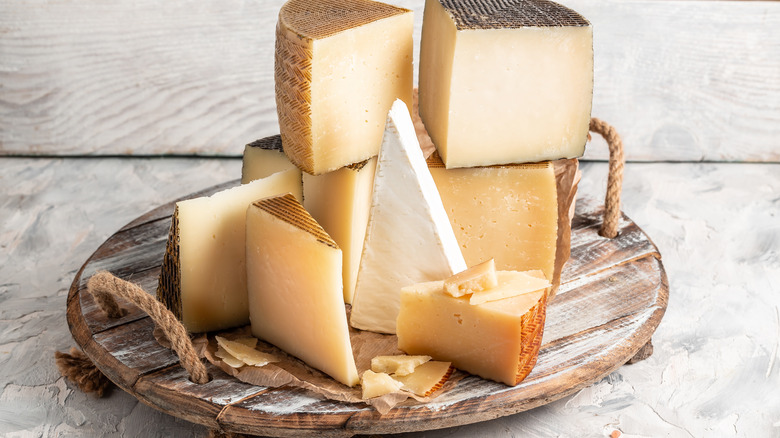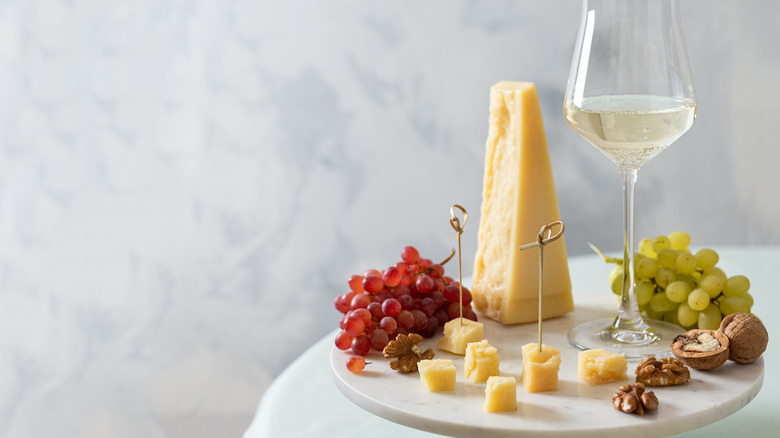The Smelly Problem With Wooden Cheese Boards (& What To Use Instead)
When making a cheese board for a crowd, there's arguably no prettier or more rustic way to serve it than on a good old wooden cutting board. In fact, a quick search on Etsy will reveal a plethora of different wooden boards made just for serving cheese — some with handles, some with patterns, and even boards that can be made with custom engravings. As attractive as these may be, wooden serving boards can soak up some unsatisfactory aromas, and those chunks of blue cheese aren't the only culprit.
It's important to make sure you're properly cleaning your boards to avoid bad smells, but also to ensure sanitation. According to the USDA, wood cutting boards should be washed with hot, soapy water, and solid wood boards are okay to put in the dishwasher. They should also be replaced once they start to break down, as it can become more difficult to clean worn-out wooden boards. But even if you're positive you're properly cleaning your wooden cheese board, there's a good reason you may want to serve your charcuterie on a different type of platter instead.
Use nonporous boards for cheese plates
Unlike plastic and bamboo cutting boards, wooden boards are typically porous, making them more difficult to clean and more likely to create unpleasant smells when used for a charcuterie platter. So how exactly do wood boards cause unappetizing aromas? According to LifeHacker, the pores in the wood absorb the scent of the food that sits on them. When using these boards to serve pungent cheeses, like gorgonzola or Taleggio, the smell of the cheese usually doesn't fade once it's taken from the board and eaten. That means even if you wash your cutting board correctly, whatever you use it for next will likely soak up a cheesy aroma.
You may want to ditch your wood cheese boards entirely, and luckily, there are a few alternatives that are just as presentable. For a restaurant-quality option that is sure to impress your guests, try using a black slate board — not only are they aesthetic and rustic-looking, but some even allow you to write in the names of your cheeses with chalk. Marble boards, glass trays, and even fancy serving dishes work well too. And if you're set on using a wood board, look for a nonporous option made from cherry, walnut, or maple. But do yourself a favor, and don't use a soft wood board for your cheese platter — your future self will appreciate it.

